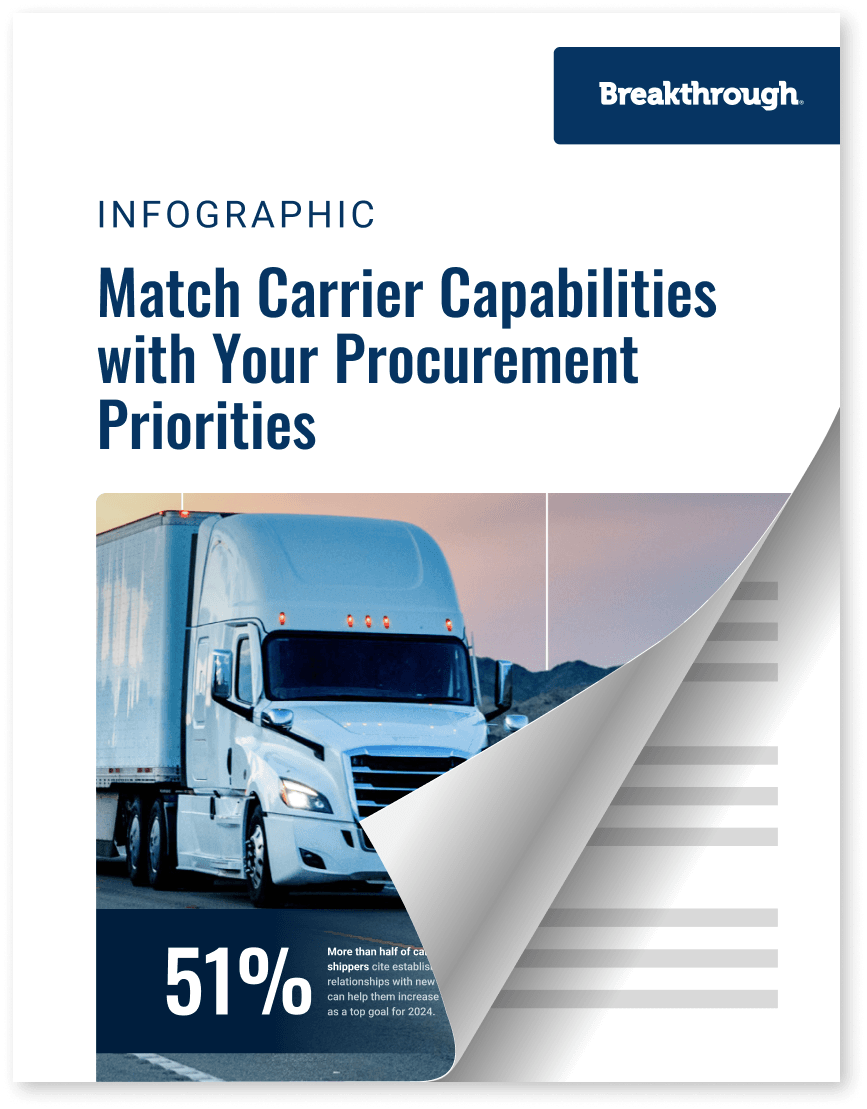Match Carrier Capabilities with Your Procurement Priorities

Freight
3 min read
April 12, 2024
Market Events
2 min read
April 4, 2024
Sustainability and Tech
5 min read
April 4, 2024

4 min read
April 6, 2021

Share:
The North American intermodal market is the largest in the world, and even at $40 billion, it continues to grow. In fact, the shipping industry continues to move toward intermodal at a clip of 9 percent annual expansion in pursuit of low-cost and more sustainable shipping solutions. But within the supply chain, transportation continues to be a complex problem to solve, and intermodal is not exempt from the challenge of moving goods to market.
Shippers need more comprehensive, accurate, and timely data to determine which lanes within their network footprint are best suited for an intermodal conversion.
Intermodal’s growth is no surprise, considering its strategic and operational advantages. Most notably, moving goods by train is about three times more efficient than by truck. A single rail shipment can move dozens or more containers full of goods, whereas all of the operational expenses associated with truckload shipments over-the-road support only one container. Transportation comprises as much as “66 percent of a shipper’s total logistics costs” with fuel taking up 20-30% of that cost. By shifting freight to an intermodal solution, you maximize on cost savings over time. In a world where every cent within your margin counts, shrinking the costs of moving goods to market is a competitive imperative.
Additionally, with boards of directors and shareholders exerting pressure to increase sustainability efforts, it helps that trains also emit fewer greenhouse gases per container. Writing in Inbound Logistics, Jeff Vielhaber found that “Trucks emit approximately 19.8 pounds of carbon dioxide per 100 ton-miles. Compare this to trains, which emit 5.4 pounds of carbon dioxide per 100 ton-miles.”
This quite simply becomes a numbers game. Consolidating many containers on one shipment diffuses the cost exposure and emissions association with that freight making it a win-win for shippers if the right movements can be identified.
With so many clear advantages, why aren’t shippers taking even more advantage of intermodal?
Traditionally, shippers have been content to pursue rail shipment only across larger, cross-country moves. Taking advantage of rail for shorter distances would be a major win for shippers, but it hasn’t always been easy to identify shorter transport lanes that naturally and optimally align with intermodal hubs and coinciding truckload capacity. Additionally, the annual or semi-annual evaluation of transportation networks during an RFP process slows a shipper’s ability to capitalize on ebbs and flows of both the market and a shipper’s footprint.
Dependency on outdated, inaccurate cost measurements holds shippers back from making more informed and advantageous decisions. But some shippers are growing intermodal rapidly, with double or even higher annual growth rates than the industry average. These industry leaders have recognized the value of clear, unbiased network data that provides a comprehensive and cross-sectional view of the North American freight landscape.
How are results like these achieved? Having accurate lane-level data for each movement along every lane can help push companies along to consider other options where needed. Market-based fuel cost accounting is a strategy that shippers can adopt today to bring better clarity to the realities of their network footprint. Because these freight movements are associated with actual financial transactions, shippers can have confidence that this data is cleaner and more accurate than other datasets used for analysis.
Internal transparency paves the way for more informed decisions about where intermodal fits within a shipper’s network when you consider individual freight flows within a much wider context. Identifying shorter-haul lanes that align to readily available intermodal capacity, as well as corresponding truckload capacity, becomes much more streamlined when you have the full ecosystem at your fingertips.
With the pressure on shippers today to increase margins and improve sustainability, maximizing intermodal usage just makes sense. Prioritizing it within your network will require the right data, partner, and analysis, but the results will quickly become a competitive advantage when operationalized.
For more information about how Fuel Recovery is helping shippers make intermodal conversions, contact us.

3 min read
April 12, 2024
Explore the pivotal role of new carrier partnerships in enhancing efficiency. Discover the considerations to make better carrier procurement decisions.
Read more
2 min read
April 4, 2024
Discover how the EPA's Phase 3 Heavy-Duty Vehicle Emissions Standards will impact transportation.
Read more
5 min read
April 4, 2024
From establishing an emissions baseline to implementing reduction strategies, discover how to efficiently and effectively achieve your sustainability goals.
Read more